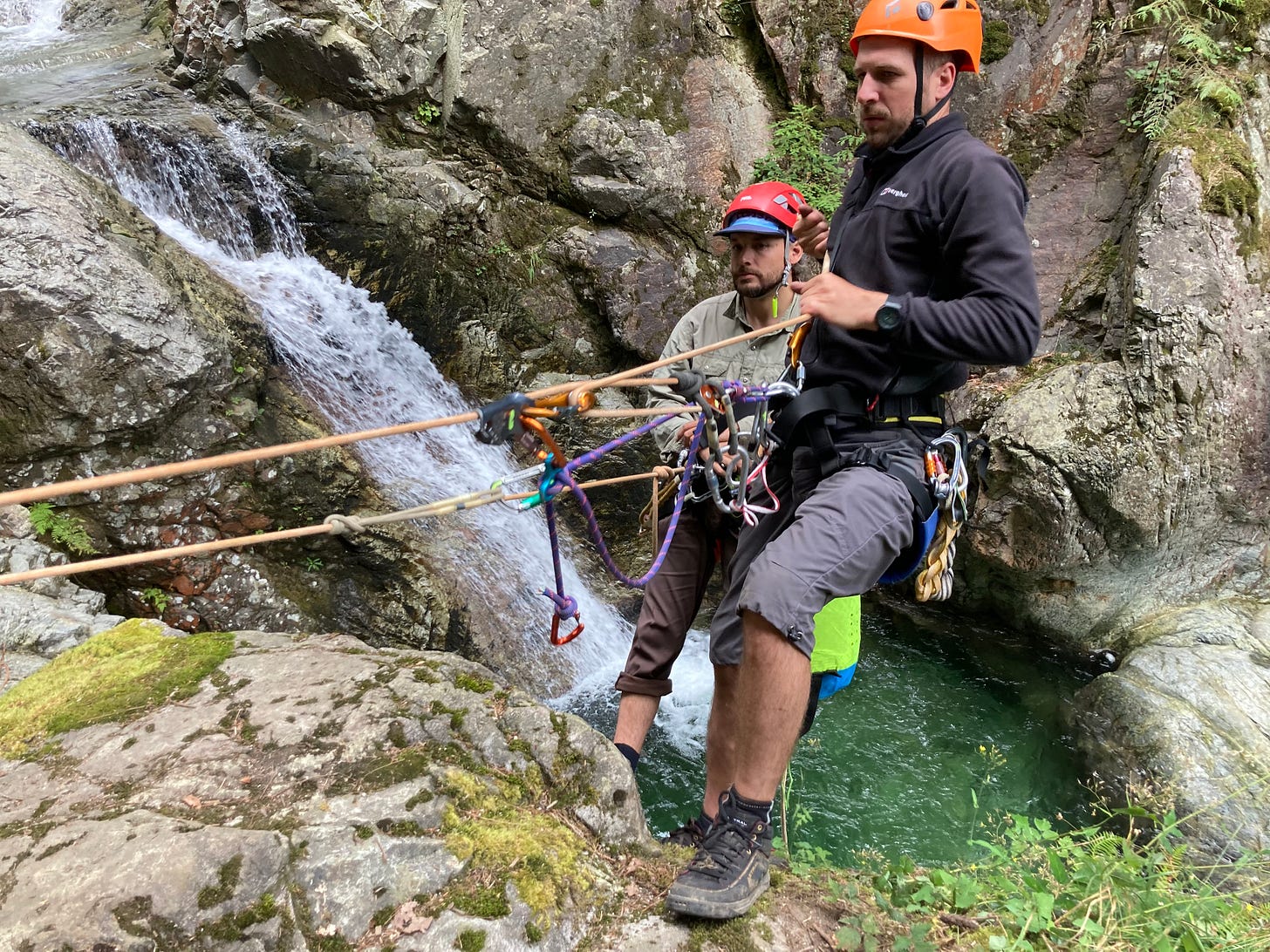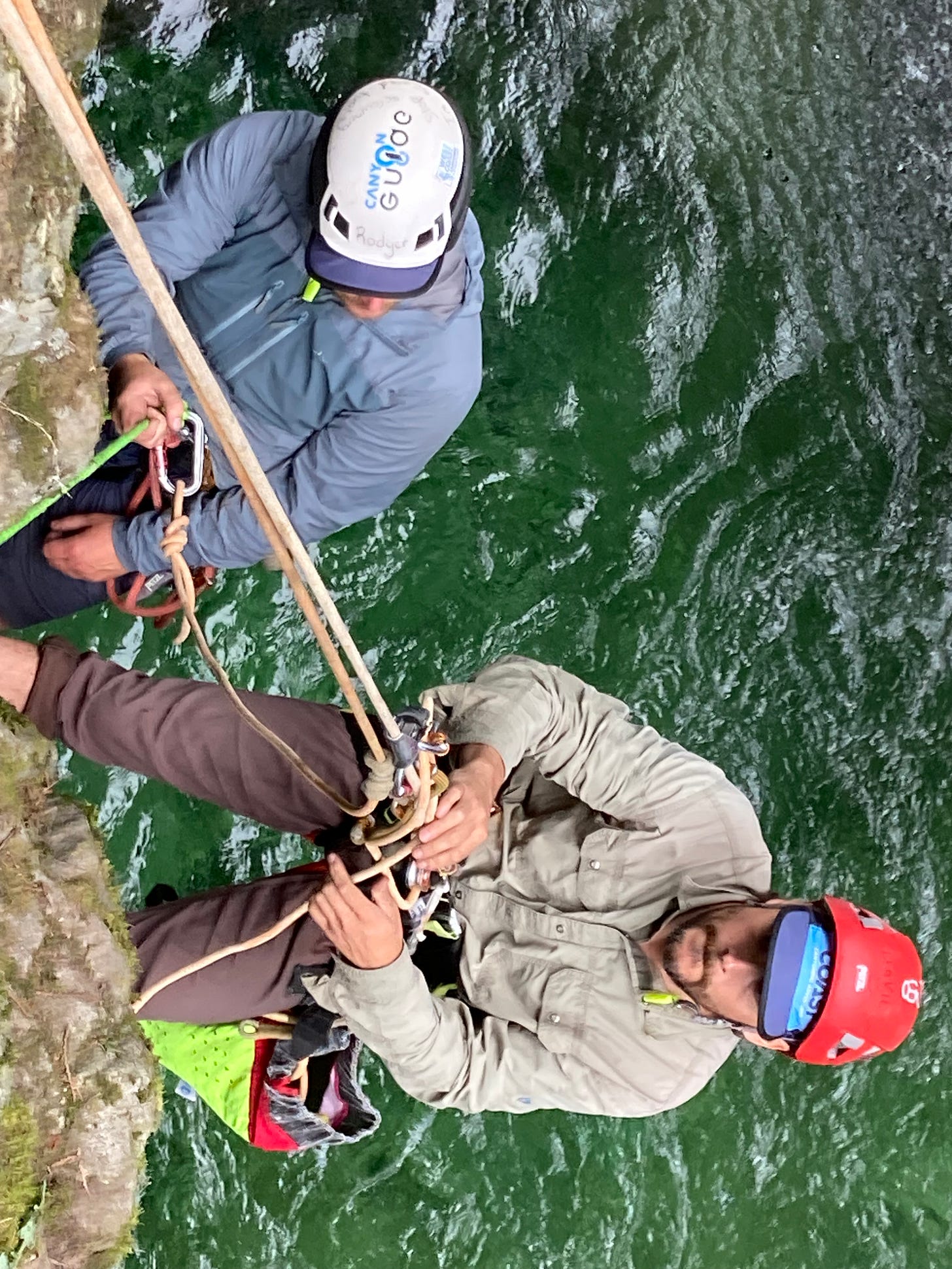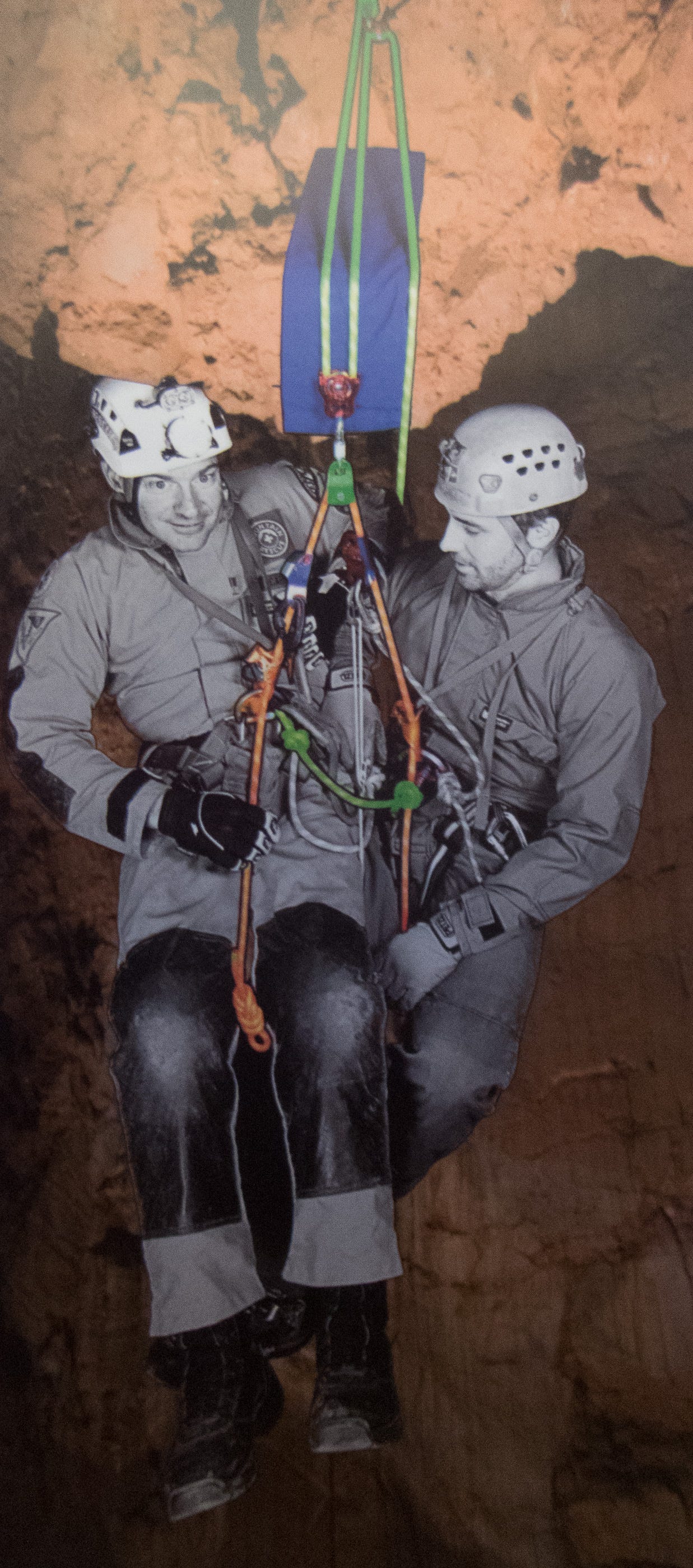Canyon Guides International rescue class B.C Canada 2025
What is it?
During canyoneering training and assessments, one of the most dreaded tasks are Pickoffs. The rescue maneuver where a rescuer goes down to a stuck or incapacitated rappeler, and performs a rescue.
Why is this task dreaded?
I think this task encapsulates several things that most canyoneers are not good at. Things like ropework, carrying adequate gear, mechanical advantage, upper body strength :)
Counterweight
There are several modalities of pickoffs. Not all of them require lifting the victim to create slack in their system, but in some cases, this is the only way to perform the rescue. For a combination of reasons listed above, lots of people learning, or practicing Pickoffs, resort to some sort of improvised counterweight maneuver during rescues, like stepping on foot loops. Sometimes it works, sometimes it does not.
Canyon Guides International rescue class B.C Canada 2025
Commitment
Once someone confronts their particular shortcomings during pickoffs, they seem to commit to either:
Commit to carry enough gear to assemble enough MA to perform a pickoff.
Increase upper body strength and commit to a more athletic approach.
But the puzzle of involving the magic of counterweight, not quite part of the options.
Diminishing Loop: The allure of counterweight
The first time I came across the Diminishing Loop was in the SPAR Manual (pg 21-15) thanks to my friend Michael Steck. At this time, it looked as depicted in the SPAR manual: A technique to extract a teammate from a pit/cave by ascending.
The second time was during the Canyon Guides International Pro Guide assessment in British Columbia Canada. This time in three modalities:
The standard diminishing loop
The 3:1 Assisted diminished loop to overcome edge friction
Moulinette Pickoff: A counterweight pickoff based on a diminishing loop.
2:1 Closed Loop & Ascending
This is the key part of this concept: Once you descend on a self-lowering system to the victim and attach to the victim by closing the system into a loop, you now can use your weight and your legs to lift the victim on a 2:1 MA. If the weight differential is not enough, you can ascend some to create enough slack in the victim’s compromised system.
FX, Pro Guide from West Coast Canyoning pointed out during the Moulinette pick off that this system allows you to shift the victim from below to above you, depending on the desired situation. Like during a waterfall to protect the victim from flow by placing the victim below you, or shifting the victim above you, before landing into a pool.
The Catch
SPAR Rescue Manual pg 21-19
In order for this rescue technique to work as intended, you need an ideal anchor location with a clean rescue path for your ropes. If not, then you need a team at the top assisting with the lift to compensate for the friction at the edge.
Where to learn it?
Next time you’re at a rescue class or workshop, see if someone can demo or teach these counterweight techniques.
If you have enough training (Canyon Guides International Level 3) take a look at the SPAR Rescue Manual




